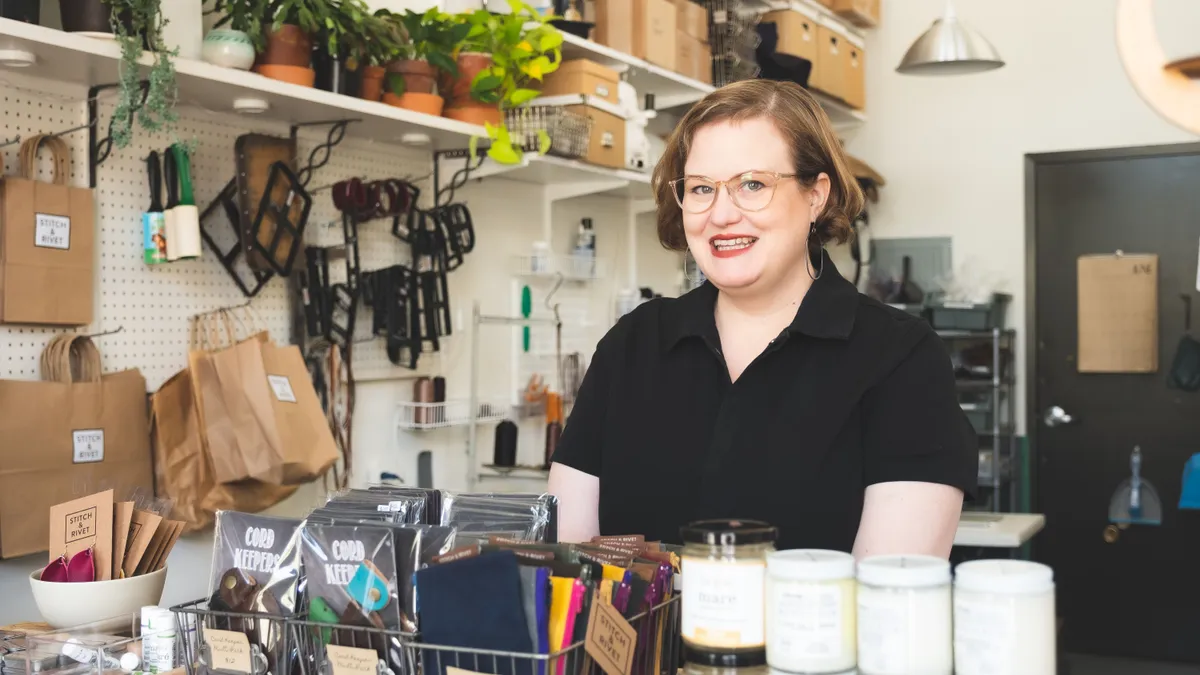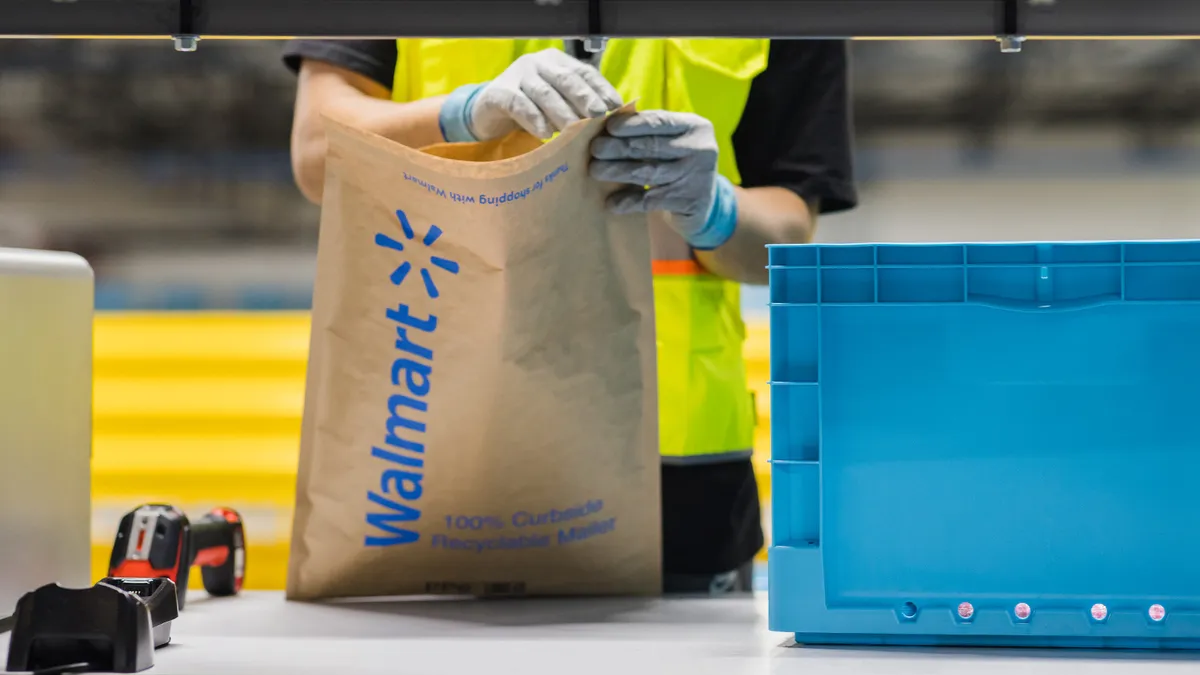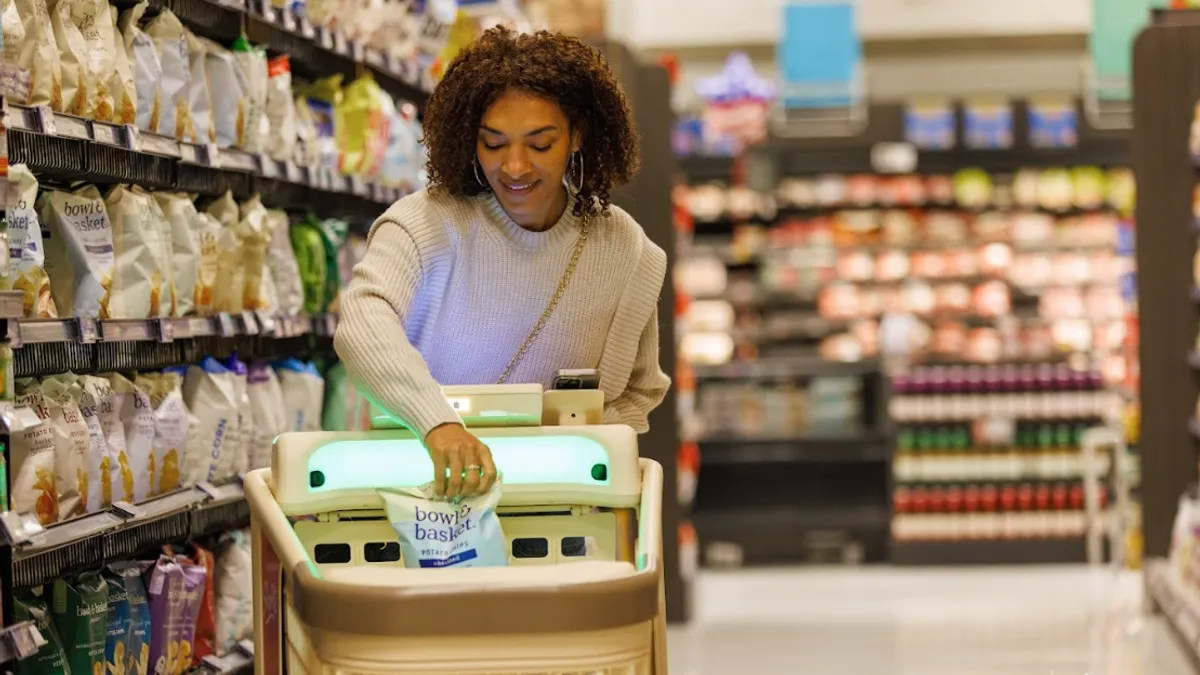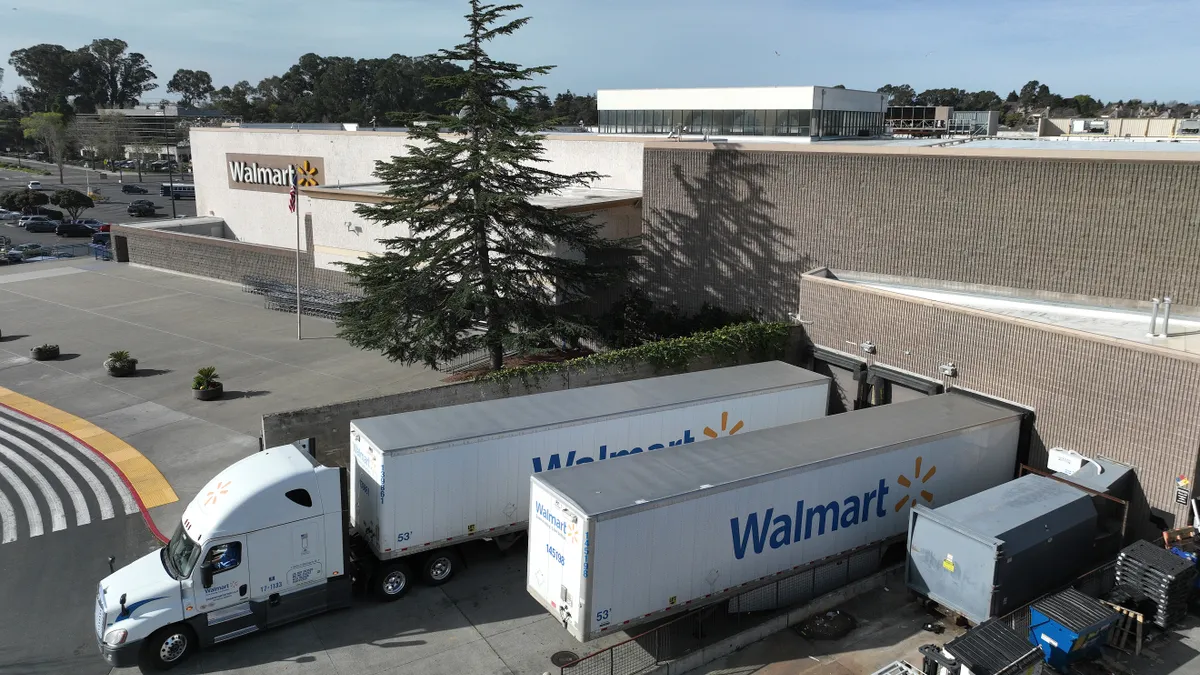The first thing you will reflexively do when you open the door of Katie Stack's shop, Stitch & Rivet, is inhale. The smell of leather will undoubtedly trigger a long forgotten memory. Of curling up in your Dad's favorite chair. Of hugging someone who always wore a bomber jacket in winter. Of a favorite wallet that, no matter how much it was battered around through daily use, only got more beautiful over time.
Stack is a crafter whose medium is leather. Her Washington, D.C., store is part retail space, part art studio. Here, she and her employees handmake a variety of crossbody bags, wallets, totes and accessories. Her work is thoughtfully designed and skillfully executed.
Stack's time as a maker and small business owner also follows the complex trajectory of sourcing in the United States. While consumers may want to support "Made in America" efforts, the ability of a retailer to make a product completely in the United States has limitations. Stack bumped into those constraints as she endeavored to build a bag that was both completely sourced and produced in the U.S.
Furthermore, the concept of "Made in America" currently has complex political underpinnings. While President Donald Trump is making a move for production operations in China to come back to the United States through imposing tariffs, manufacturers are pushing back, stating that moving suppliers would be difficult and time consuming.
The implications for big-box stores, department stores and specialty retail may seem readily apparent — namely that tariffs will chip away at business margins. But small, independent stores have been bracing themselves in a similar way to the major players. Retailers and manufacturers of all sizes are stymied by a simple reality: very little production happens in the United States.
The 'Made in America' bag
The "All American Tote" bag was designed as a personal challenge. Stack set out to see if she could create a bag that was completely made in America. That meant sourcing all the different elements and physically creating the product here in the United States.
The materials she uses, cattle hides, are byproducts of the American food industry. She also sources leather from places that sell off portions of hides that cannot be used. But, she explained, "The big challenge was to find leather tanneries in the United States that were willing to work with a company like mine that produced a few hundred of something as opposed to a company that produced many thousands of something," she said. "Most U.S. tanneries until very recently were pretty unwilling to have a conversation with a business like mine."
The thing that changed her ability to grab leather in the United States? Instagram. A burgeoning crafter market and the increased popularity of the social media platform meant that suppliers realized that there was an audience to purchase raw materials in reduced batches. Leather in smaller quantities was suddenly available, Stack explained.
But she ran into problems when it came to the bag's hardware. Stack could get zippers from the U.S., but other items that make up a purse — like strap sliders and clips — were nowhere to be found. Specifically, rivets, the metal fasteners that are also part of the company's name, couldn't be sourced. (Although, she could find military-grade hardware, which wasn't the best option for a refined consumer product.)
So she made the bag without hardware. The final product, which sold for around $250, was created only out of leather, thread and a zipper. The tote was all stitched, including the reinforcements.
She produced it for a year, but then stopped.
"People when they're buying a bag at that price point they want a key clip on the inside. They want things that are a little more specific to the way we live our everyday lives," Stack said. "Rivets are, in fact, part of my business name. So, people expect everything to be stitched and riveted … rivets are what make things that last for a long, long time."
Although she decided not to keep the bag as part of her product line, Stack did keep a key component from that experience that changed her business — her relationship with American tanneries. Instead of sourcing from outside of the country, she was able to start working with companies that were willing to meet her company's raw product needs. While not all of the elements of her bags can realistically come from the United States, now Stack's main material, leather, comes from U.S. tanneries.
Sourcing from the United States also allows her to spend in a way that aligns with her environmental concerns. When she was obtaining materials from other countries, the conditions in which materials were processed couldn't be guaranteed. "In some countries there is not much oversight of the water handling. Leather tanning is a water-intensive process," she explained.
Outside of the United States, regulations over what happens to the water can be inconsistent. "I believe in OSHA and the EPA and worker's rights," she said. "I think that whatever I can do to make sure those tanneries are following at least basic rules makes me feel better about my product. And I think it makes my customer feel better about my product."
The confusion with tariffs
As recently as May, it was predicted that tariff tension between the United States and China would place $40 billion in sales and 12,000 stores at risk this year. This past weekend, though, in a seeming reversal of stance, President Trump announced during a press conference that the United States will not impose tariffs on $300 billion worth of imports from China, "for at least the time being."
While it may seem obvious that an increase in tariffs would impact a variety of big-box retailers and department stores, the shifting policies have impacted small businesses as well.
Stack read the news about looming tariffs and strategized on how to best drive sales while she prepares for the upcoming holiday season. Although she made the decision to source all of her leather in 2019 in the United States after the production of her tote bag, there were still causes for concern on how the tranche four tariffs, which were expected to catapult to a 25% duty on goods, would impact her product price points, specifically on the hardware used to make her bags.
In January, Stack made a plan to front-load her store with smaller goods at a lower price point. She introduced leather earrings made out of leftover leather scraps for $22. She is working with a die cutting company in Milwaukee to offer a luggage tag. She also was in the midst of preparing for her employees not to have enough work in January or February of 2020 due to a predicted sales downturn in the upcoming Christmas season.
Trump's June 29 announcement not to pursue tariffs on $300 billion worth of imports of China was welcome news, but Stack decided to continue on her approach of lower-priced items in case the tide turns once again.
"The problem for both retailers and consumers is that no one can plan. Nobody knows what's going to happen," Stack said. "So it's thrown everything into this incredible instability."
Prior to the decision not to implement tariffs, Stack was preparing for a tough holiday season. Following the presidential announcement she is proceeding forward with caution. Stack still believes that there is going to be a need for lower-priced items in her shop. "It hasn't changed my opinion," she said. "This holiday season is going to be all about less expensive items … Everyone is bracing for instability and a recession."

















